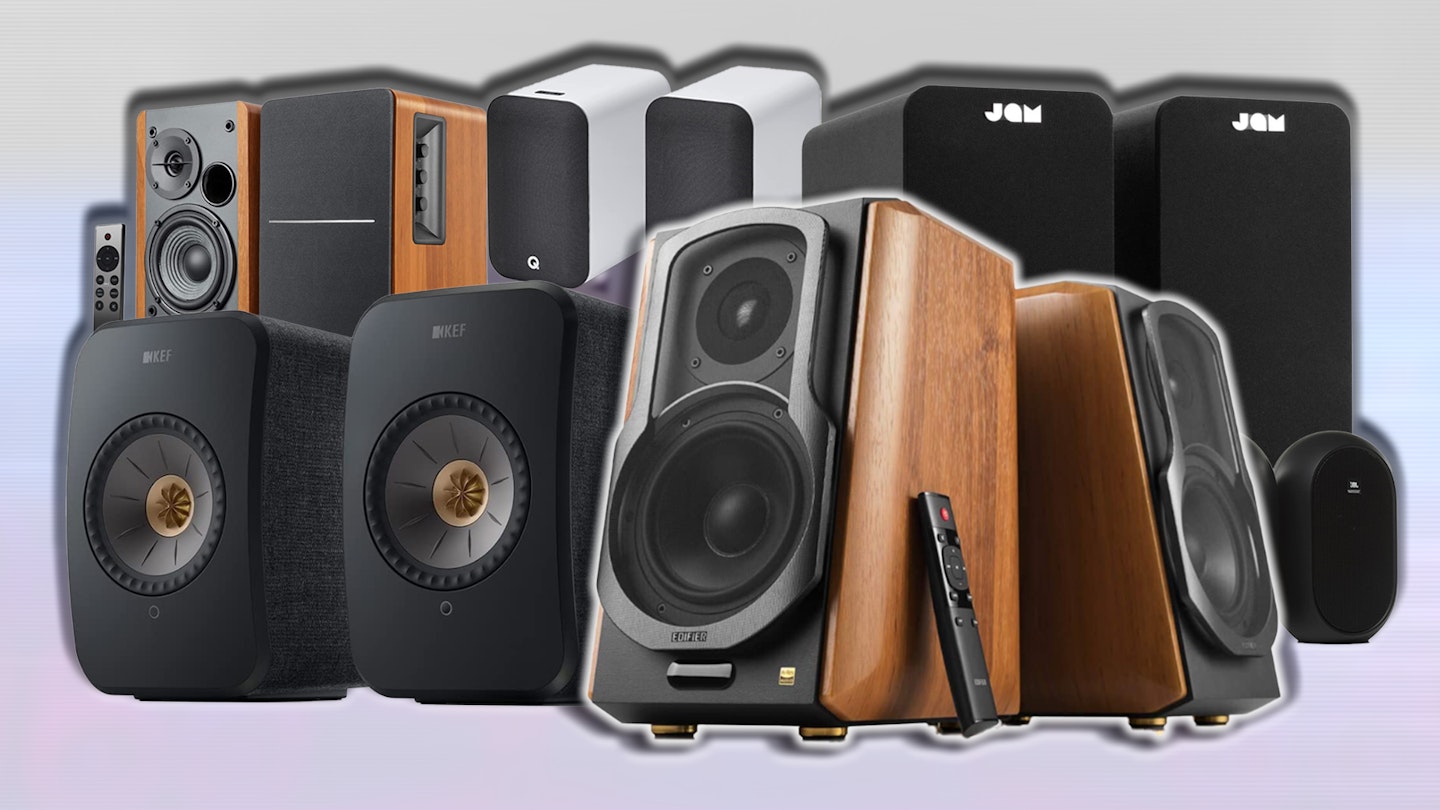Even the very best active speakers can compete with passive wired speakers in terms of fidelity, and that's thanks to some of the best speakers having some of the most cutting-edge amplifier tech built into them. Admittedly, the concept itself might make even casual listeners run to the hills. After all, we know that proper audio gear is passive speakers hooked up to a separate amp. Or do we?
Audio kits have become smaller and more powerful than ever. Amplifier tech is a prime example – not because circuit boards are shrinking, but because amps need lots of power. And that’s not an easy thing to shrink without compromising on frequency range and volume (read on to our jargon buster to find out more). That is, until now. Even top brands such as KEF and Wharfedale are getting in on the act. Use your hard-earned money wisely and you’ll be able to ditch the bulky amp while still outperforming some dedicated hi-fi speaker systems.
Best active speakers of 2024 at a glance:
• Best budget: JAM Bluetooth Bookshelf Speakers – View on Amazon
• Best bookshelf: Edifier R1280DBs Bookshelf Speakers – View on Amazon
• Best compact: JBL 1 Series 104 Compact Speakers – View on Amazon
• Best all-rounder: Edifier S1000MKII 2.0 Active Shelf Speaker – View on Amazon
So, what kind of active speakers are right for you? The best TV soundbars or portable music players may be self-amplified and contain stereo speakers, but you won't find any of those here. Why? Because what we're focussing on is true stereo separation across two separate speakers. If you're a music fan, go for ones that look good with your system and have a good reputation for musicality. Go for a portable size if you're more of a casual all-round user with things like PCs and laptops as you're likely to be moving them.
Active speakers should look like speakers, sound like passive speakers, allow for some tone control, and still support enough audio inputs to be useful. So, if you're ready to keep those solid premium hi-fi looks but lose the bulk and hassle of a separate amplifier, we have plenty of buying advice to help.
The best active speakers of 2024
All prices are correct at the time of writing. Prices, stock and deals are subject to change without notice.
Best budget
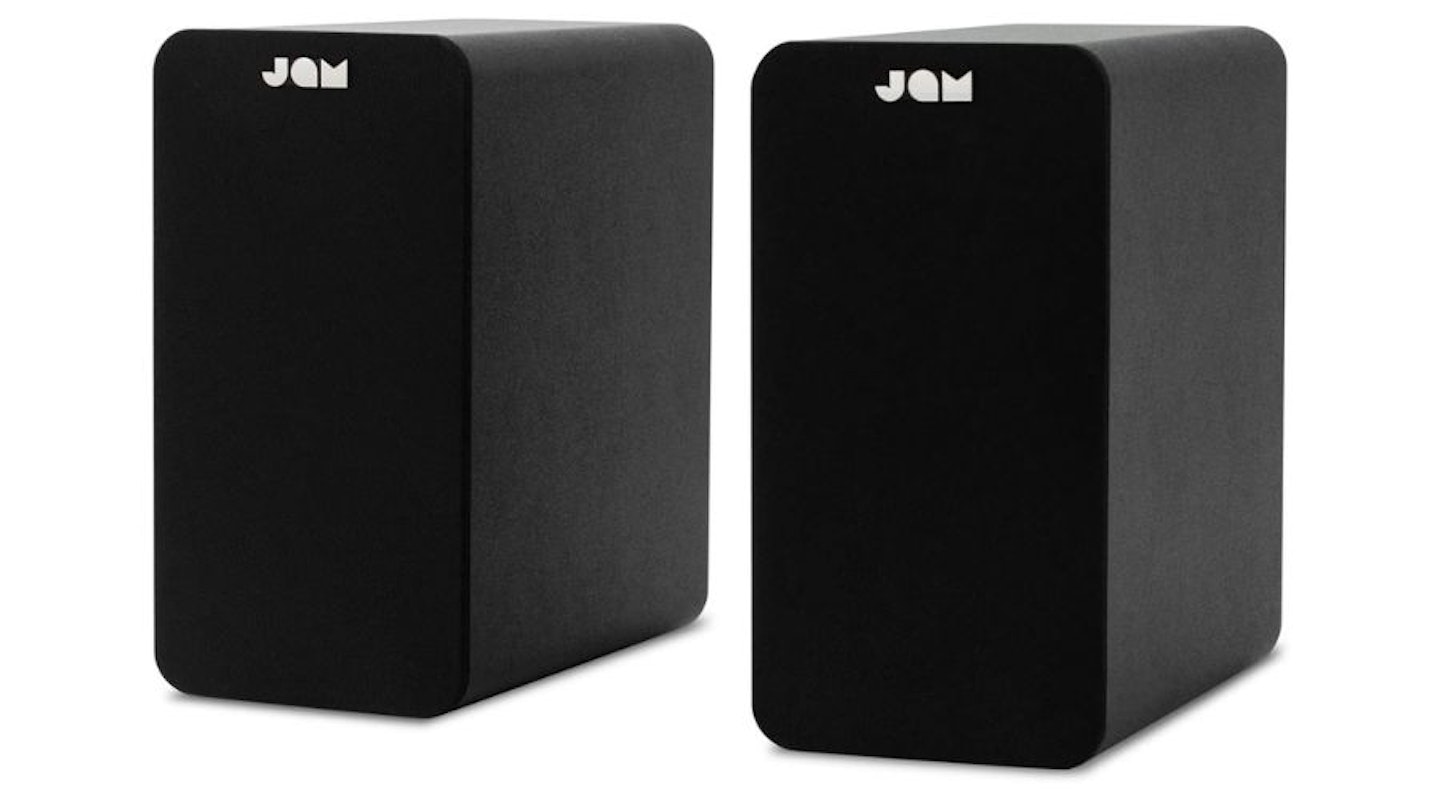 Amazon/JAM
Amazon/JAMThe JAM brand has been around for a while, and it's carving its own path in fun, minimal design which meets simple but solid functionality. Here, JAM has also thrown extreme affordability into the mix, which means you can place these little gems anywhere no matter what your budget and get just enough features to suit a range of needs.
As the name suggests, these are indeed Bluetooth 5.0 speakers with the added benefit of a phono input and a 3.5mm audio jack auxiliary input. Four-inch bass drivers provide enough punch for general listening, and if you have a JAM turntable these speakers will pair with that as well as any other Bluetooth audio device. We would have liked to have seen a remote control included, but at this price, these speakers are hard to find fault with.
Pros
- Good tone despite being 30 watts
- Slim profile for flexible placement
- Can be matched and paired with JAM turntables
Cons
- Limited input options
| Drivers: | 4-inch bass drivers, 0.75-inch tweeters |
| Output power: | 30W |
| Impedance: | Unspecified |
| Frequency range: | Unspecified |
| Active/Passive: | Active |
| Dimensions: | 25 x 13.2 x 25 cm |
| Weight: | 4.1kg (per speaker) |
Best bookshelf speakers
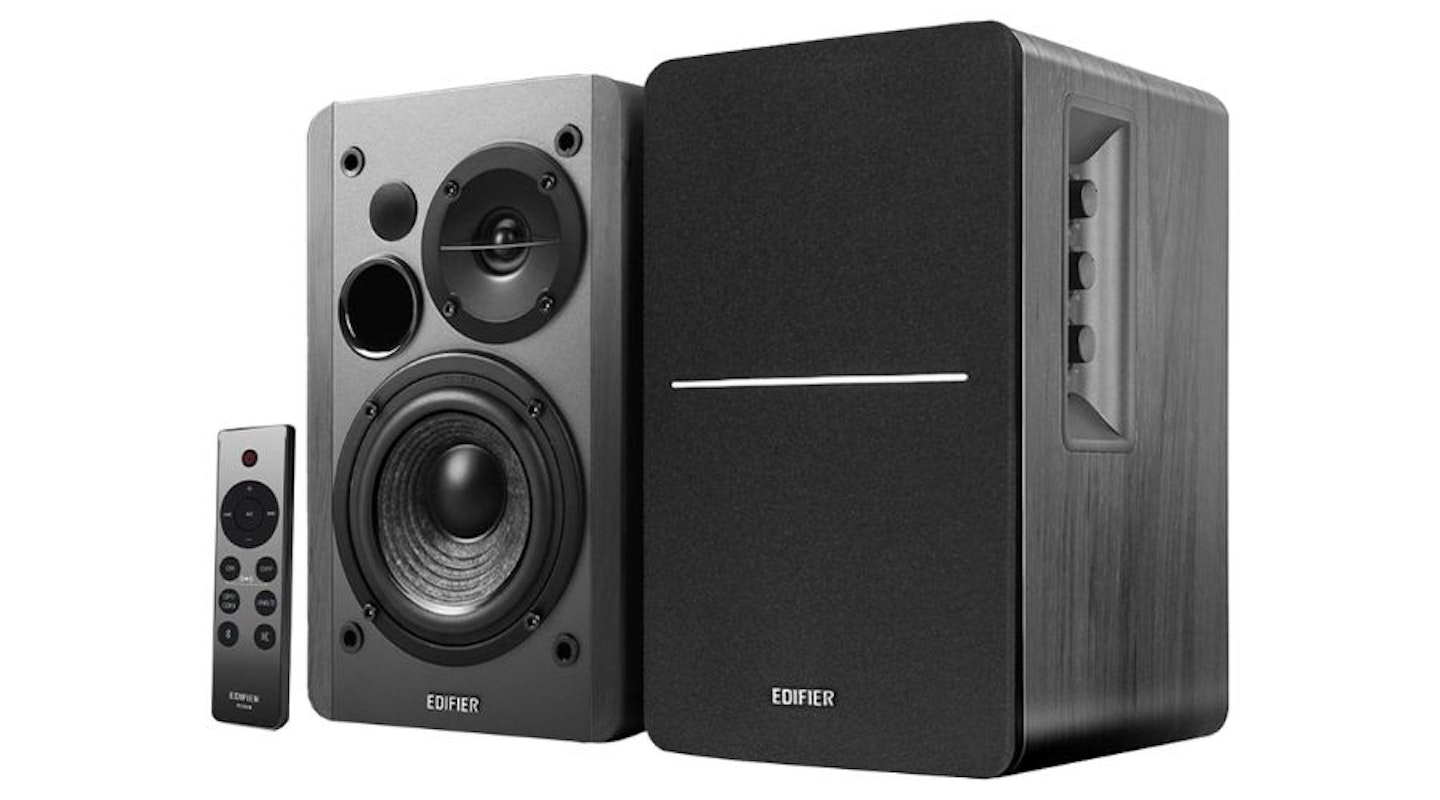 Amazon/Edifier
Amazon/EdifierThe Edifier R1280DBs do look like bookshelf speakers, much like many of the others we've featured here. So, what sets these apart enough to make them our pick for the best bookshelf active speakers? We'll come back to that later, but first here are the all-important verdicts on spec and performance.
They deliver punchy audio that's well-suited to a small-to-medium-sized room. A 4-inch bass driver and 0.5-inch tweeter deliver ample volume and well-defined acoustic detail. The tone can be manually adjusted using the treble and bass EQ controls.
So, back to what makes them the best bookshelf speaker here. Well, it's simple ergonomics. If, as the name suggests, you do indeed wish to place these on a crowded bookshelf or corner, you can easily reach the volume and tone controls.
They've been placed in a recessed panel on the side. The cabinet design is also a factor here, as they're not angled or protruding – so they will sit squarely on a shelf if you need them to. All in all, the Edifier R1280DBs speakers offer the flexibility of plenty of connections as well as ease of operation and neat placement options. Bookshelf perfection.
Pros
- Very well engineered
- Active speakers ideal for those without a separate amp
- Excellent bass
Cons
- Included cables are a little cheap
| Drivers: | 4-inch (100mm) cone woofer, 0.5-inch (13mm) dome tweeter. 85dB. |
| Output power: | 42W |
| Impedance: | 8 Ohms |
| Frequency range: | 75Hz - 18kHz |
| Active/Passive: | Active |
| Dimensions: | 23.4 x 14.6 x 19.6 cm |
| Weight: | 4.9kg |
Best compact
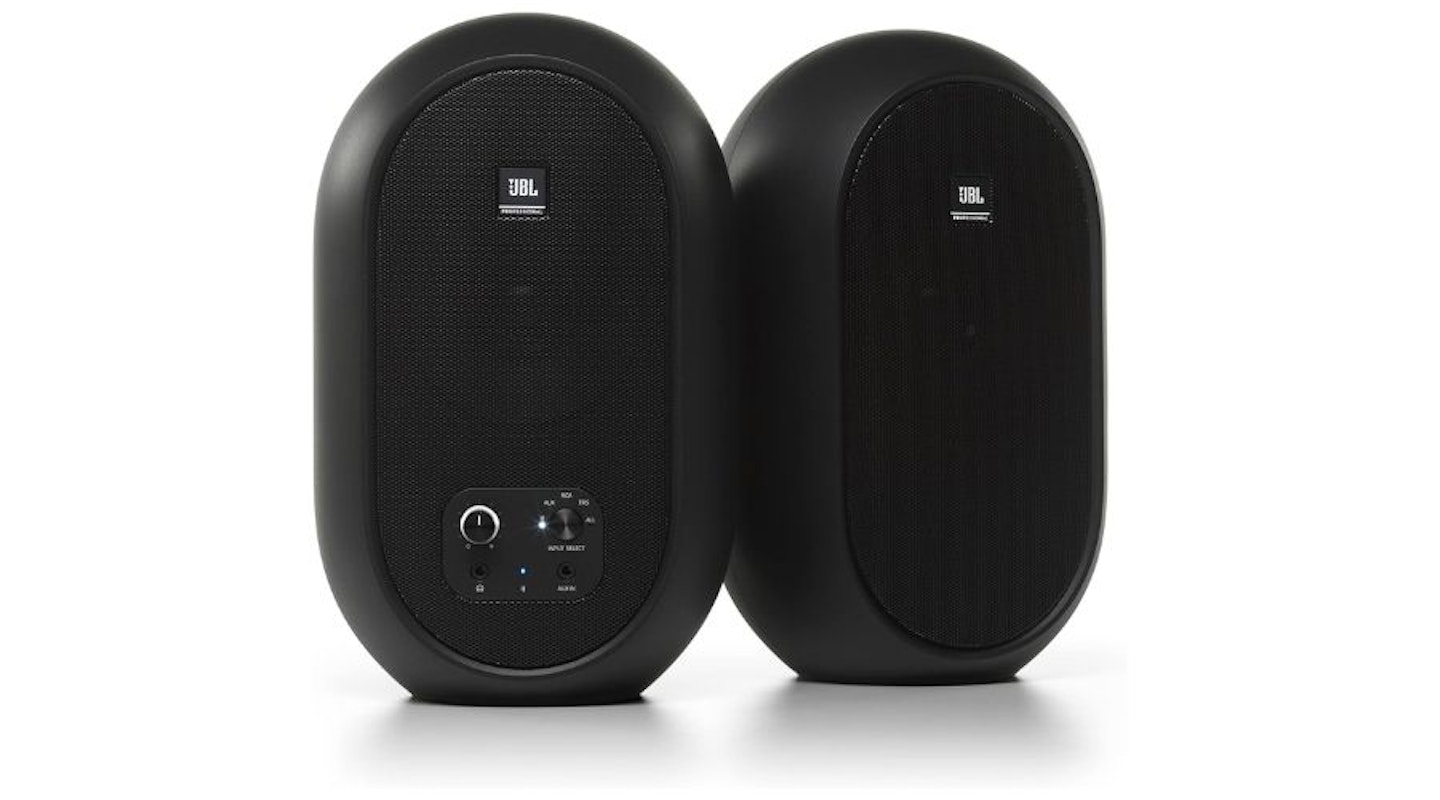 Amazon/JBL
Amazon/JBLWe recently took a look at the best JBL speakers as they have a stunning array of high-tech audio products, including speakers. The company has proven itself for masterfully stuffing as much audio goodness into small packages as possible, and the 1 Series 104 Compact Desktop Speakers are a fantastic example.
At first glance, you'd be forgiven for writing these off as tinny budget speakers – and the pedestrian design of these is our only big criticism. However, here JBL has made a very robust pair of active speakers that will fit anywhere and do a very simple job brilliantly.
Considerably larger than they appear from the product photography at nearly 10 inches high, these 104 speakers have an innovative coaxial driver design that maximises the detail and accuracy of sound. Three external inputs and front-facing source and volume controls make these speakers a pleasure to use - plus they're compact enough to take them anywhere with ease.
Pros
- Fits anywhere
- Handy front-panel headphone jack, mute and power controls
- Great bass for the size
Cons
- Limited acoustic range may not be enough for audio production
| Drivers: | 4.5-inch (118 mm) LF driver and 0.75-inch (19 mm) soft-dome HF driver |
| Output power: | 60W |
| Impedance: | Unspecified |
| Frequency range: | 60Hz - 20kHz |
| Active/Passive: | Active |
| Dimensions: | 24.7 x 15.3 x 12.4 cm |
| Weight: | 2.06 + 1.73kg |
Best all-rounder
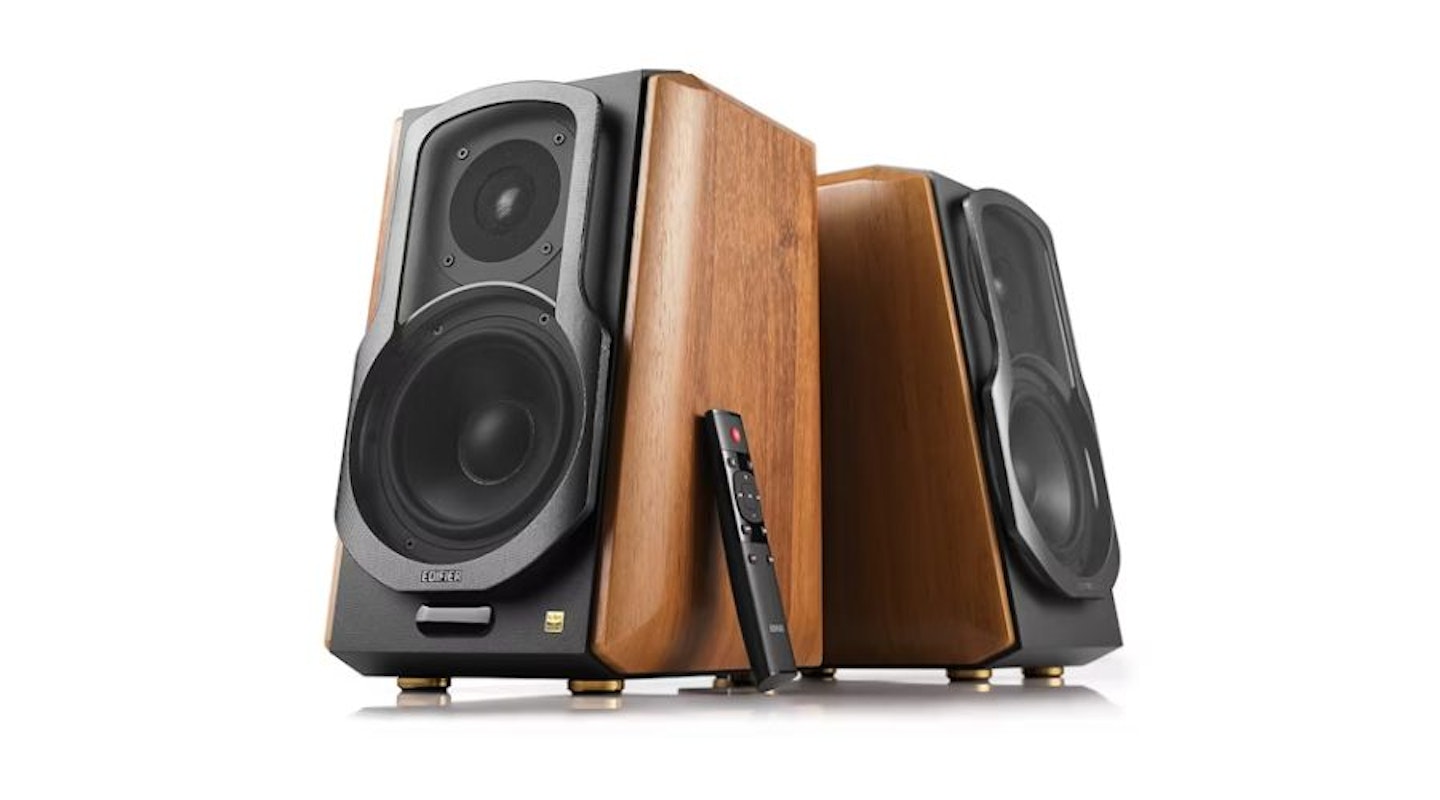 Overclockers/Edifier
Overclockers/Edifierwww.overclockers.co.uk
Edifiers main business is in making premium sound systems, and it's been doing just that since the late '90s. The rather elaborately named S1000MKII is a masterclass in design, engineering and function.
It's clearly aimed at the audiophile market, but without the exorbitant price tag to match. Surely that should be ringing some alarm bells? An audiophile kit for under £300? Unheard of. But Edifier has made its pair of active bookshelf speakers live up to this label and more.
The Class D amplifier kicks out 120 Watts from inside the beautifully engineered cabinets. There are plenty of inputs at the back, including two sets of phono connections, an optical connection and a coaxial too. You can tune the sound to your preferences using easily accessible control knobs at the back, and the remote will switch between sources too.
The killer features here are the addition of Bluetooth 5.0, and Hi-Res Audio certification for deeper digital bitrates. The Edifier S1000KMII is pretty much ready for anything, and there's not a separate amplifier in sight.
Pros
- Truly stunning build and engineering
- High-res Bluetooth audio
- Lots of connection options
Cons
- A sub-out connection would have been the icing on the cake
| Drivers: | 5.5-inch aluminium bass speakers, 1-inch advanced titanium dome tweeters |
| Output power: | 120W |
| Impedance: | Unspecified |
| Frequency range: | 45Hz - 40kHz |
| Active/Passive: | Active |
| Dimensions: | 34.3 x 19.8 x 27.6 cm (per speaker) |
| Weight: | 16.7kg |
Best for PC
 Amazon/PreSonus
Amazon/PreSonusThese Eris E3.5 speakers could easily have been a contender for our best budget active speaker category, but these have a particular set of talents that make them extremely well-suited to PC use.
Firstly, they're classed as studio monitors – which means that the clarity and separation of the audio will be ideal for anyone who mixes music on their computer. Commonly used controls are also easily reached on the front panel – again ideal for a PC desk setup.
The rear panel has some acoustic tuning via high and low-frequency control knobs, a relatively rare feature – certainly at this price point. The addition of a headphone jack and an auxiliary input makes these flexible enough for various applications too.
These may have something of an industrial design about them as speakers go, but considering they belong on or close to a desk that's no bad thing.
Pros
- Compact and smart
- Accessible controls
- Great precision for games and mixing
Cons
- Very limited input options
| Drivers: | 3.5-inch woven composite drivers, ultra-low-mass silk-dome tweeters |
| Output power: | 50W |
| Impedance: | Unspecified |
| Frequency range: | 80Hz - 20kHz |
| Active/Passive: | Active |
| Dimensions: | 16.26 x 14.22 x 21.08 cm |
| Weight: | 2.9kg |
Best for vinyl
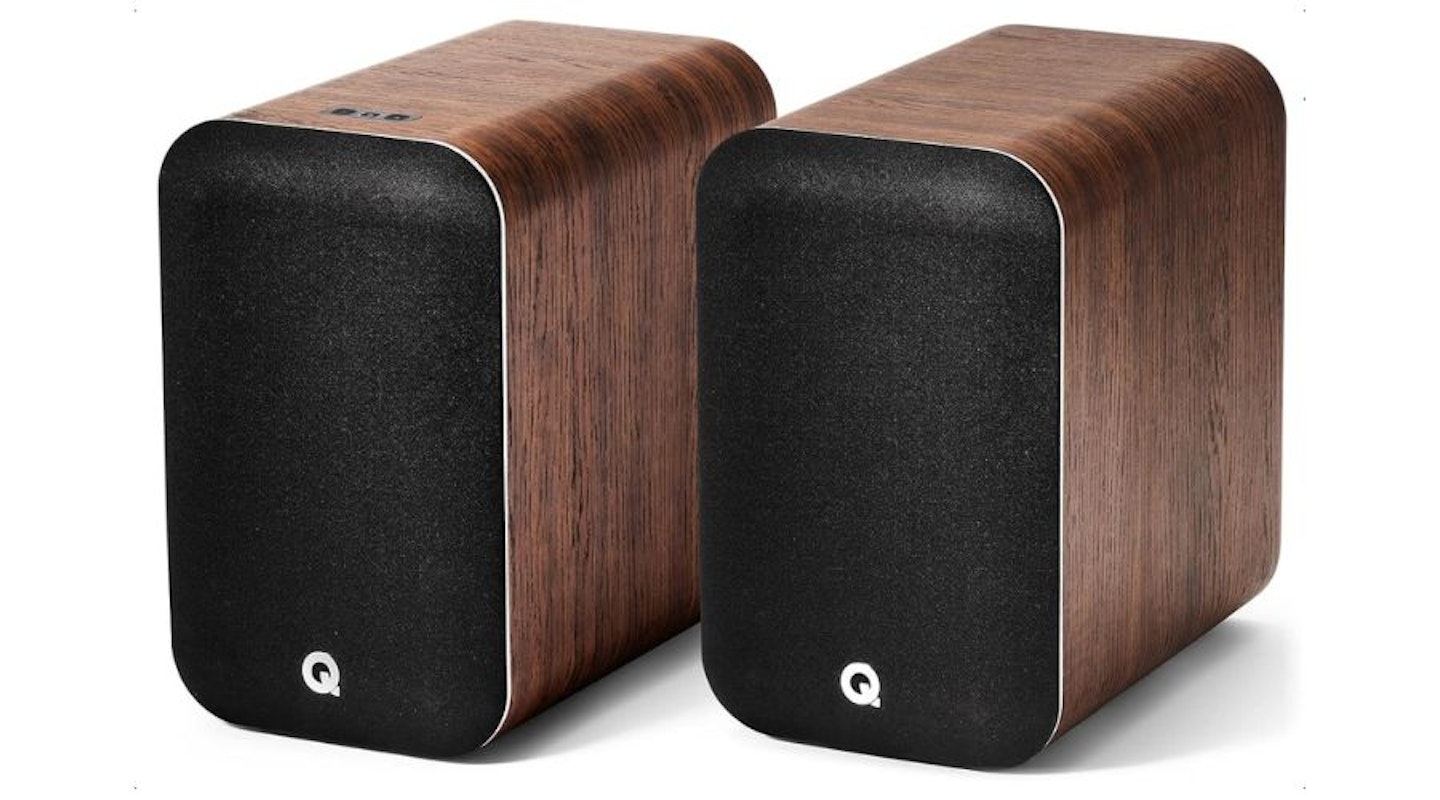 Amazon/Q ACOUSTICS
Amazon/Q ACOUSTICSWith these stunning M20 active speakers, British company Q ACOUSTICS has come up with a very solidly constructed addition to your vinyl setup. These are exactly the sort of slimline, feature-rich speakers that belong in pride of place next to your turntable. They're refined and understated to look at, but still make themselves known as part of the decor.
Yes, there's high-resolution Bluetooth support. Yes, there are USB, optical and phono inputs. But, as music and vinyl fans ourselves here at What's The Best, the addition of a subwoofer-out port means that you can take this system to the next level for room-shaking bass.
One unique feature we love is the EQ preset switches on the back panel that lets you choose the right sound to suit your placement – for instance in a corner, or against a wall. Q ACOUSTICS' internal point-to-point cabinetry is on hand to brace the internal space for maximum focus and soundstage accuracy too. They look as good as they sound, and your record collection won't know what's hit it.
Pros
- Sub-out for extra bass
- Contemporary yet refined looks for a vinyl setup
- EQ preset switches
Cons
- You'll need a pre-amp on the input from your turntable
| Drivers: | 22mm tweeters, 125mm mid/bass driver |
| Output power: | 32W x 2 |
| Impedance: | 4 Ohms |
| Frequency range: | 55Hz - 22kHz |
| Active/Passive: | Yes |
| Dimensions: | 79 x 29.6 x 21 cm |
| Weight: | 5.5kg |
Best for TV
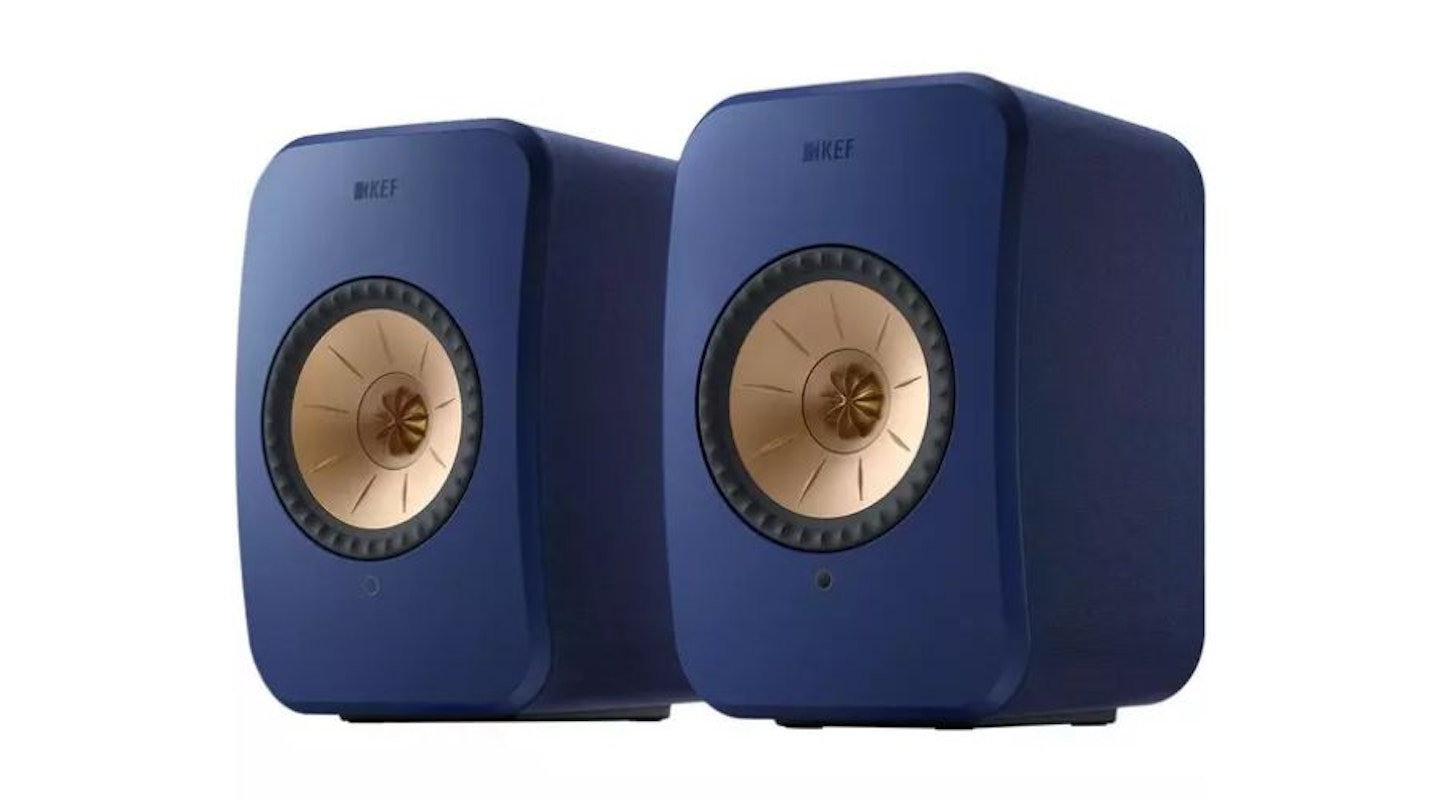 Currys/KEF
Currys/KEFAudio masters KEF has moved even further towards neat yet premium speakers in recent years. That doesn't make them unique by any degree, but what sets these KEF LSX II active speakers apart from the competition is that legendary KEF engineering.
The cabinets are pure sophistication, built for big sound. They support Wifi, Bluetooth and Apple Airplay 2 for wireless streaming. The resolution of any digital source is audiophile-grade, so hardcore listeners will really hear the difference.
These active speakers also carry multiroom capabilities thanks to their ability to pair with other LS-series speakers for whole-house listening. They can be fitted with the P1 Desk Pad – feet for using these on a desk, B1 Wall Brackets, or S1 floor stands. The real joy here, in terms of tech specs, is the rear panel. Although we think this speaker system is missing any regular phono inputs, the LSX II makes up for that in one fell swoop - HDMI ARC.
This is why these KEFs have taken our spot for best active speakers for TV. The HDMI port can take the audio from whatever you're watching on your TV and pipe it to the speakers. We also have USB-C, ethernet, optical, and a 3.5mm auxiliary. There are five striking colour schemes too. These are simply the best active speakers with HDMI ARC that we've come across.
Pros
- Incredibly well engineered
- Beautiful design
- HDMI ARC for TV connection
Cons
- No analogue RCA/Phono connection
| Drivers: | Uni-Q driver 19mm HF aluminium dome; 11.5cm MF aluminium cone |
| Output power: | 200W |
| Impedance: | Unspecified |
| Frequency range: | 49Hz - 47kHz |
| Active/Passive: | Active |
| Dimensions: | 24 x 15.5 x 18 cm |
| Weight: | 7.1kg |
Best premium
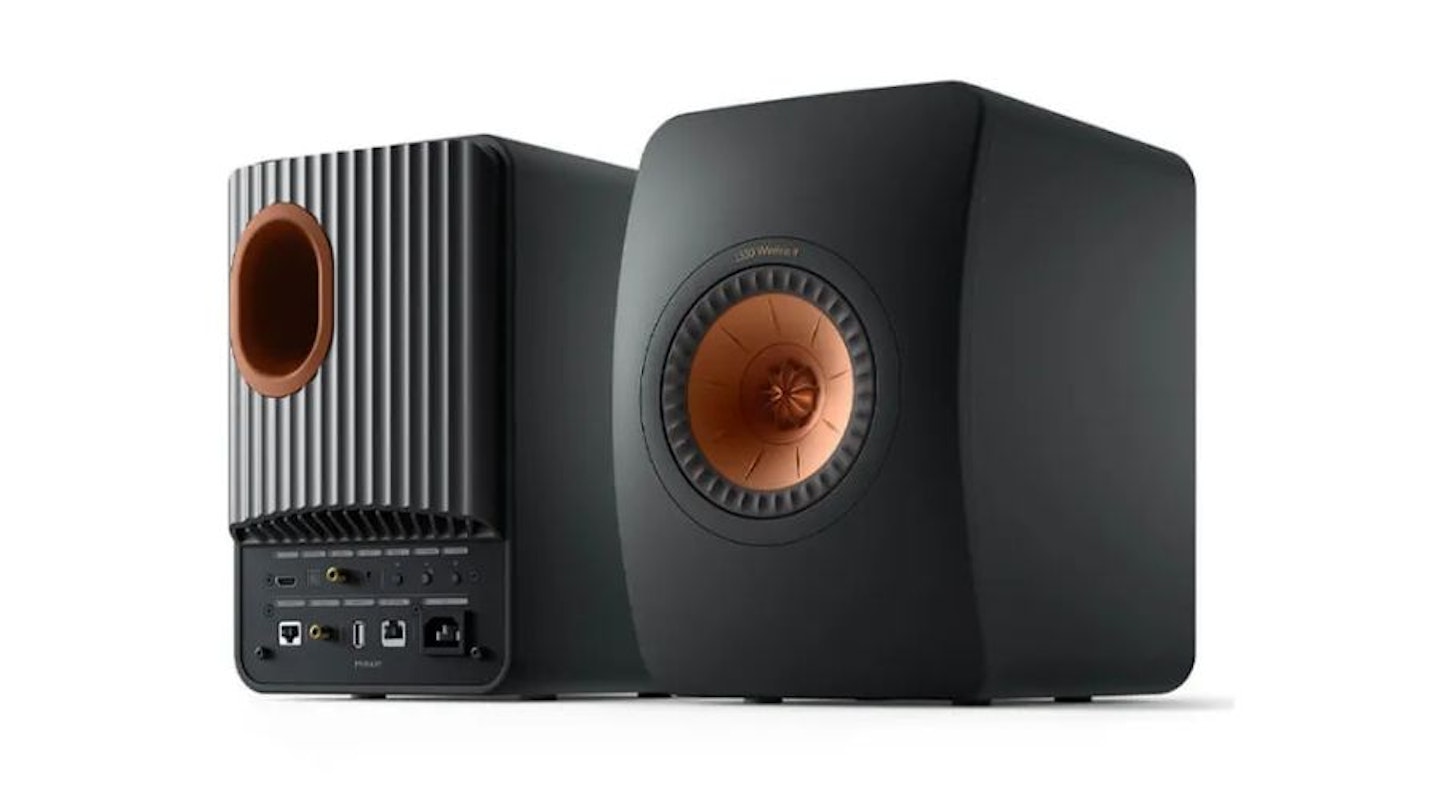 Smart Home Sounds/KEF
Smart Home Sounds/KEFwww.smarthomesounds.co.uk
KEF makes it back into our list and for good reason. It's extremely difficult to find wireless stereo excellence twinned with sophisticated design and build. But, the LS50s are all about both. The soundscape is what counts here - particularly as active speakers.
Much like the LSXII speakers above, these also have an HDMI ARC port and have multiroom and streaming connectivity thanks to Bluetooth. Integration with Amazon Music, Spotify, Apple Music and more make these a truly music-oriented experience.
These don't come cheap, and that's due to the KEF audio know-how inside. Its Uni-Q speaker tech and Metamaterial Absorption Technology eliminate 99 per cent of unwanted noise from the rear of the driver, resulting in a more natural sound. A gargantuan 200 watts per speaker makes for an all-encompassing musical experience.
Pros
- The sound quality is nothing short of incredible
- Amazing design and build
- Multiple use cases
Cons
- Very heavy bass lovers may still want a subwoofer
| Drivers: | 1 x 25mm tweeter, 1 x 130mm mid/low |
| Output power: | 200W |
| Impedance: | Unspecified |
| Frequency range: | 40Hz - 47kHz |
| Active/Passive: | Active |
| Dimensions: | 30.5 x 20 x 31.1 cm |
| Weight: | 7.2kg |
Best professional
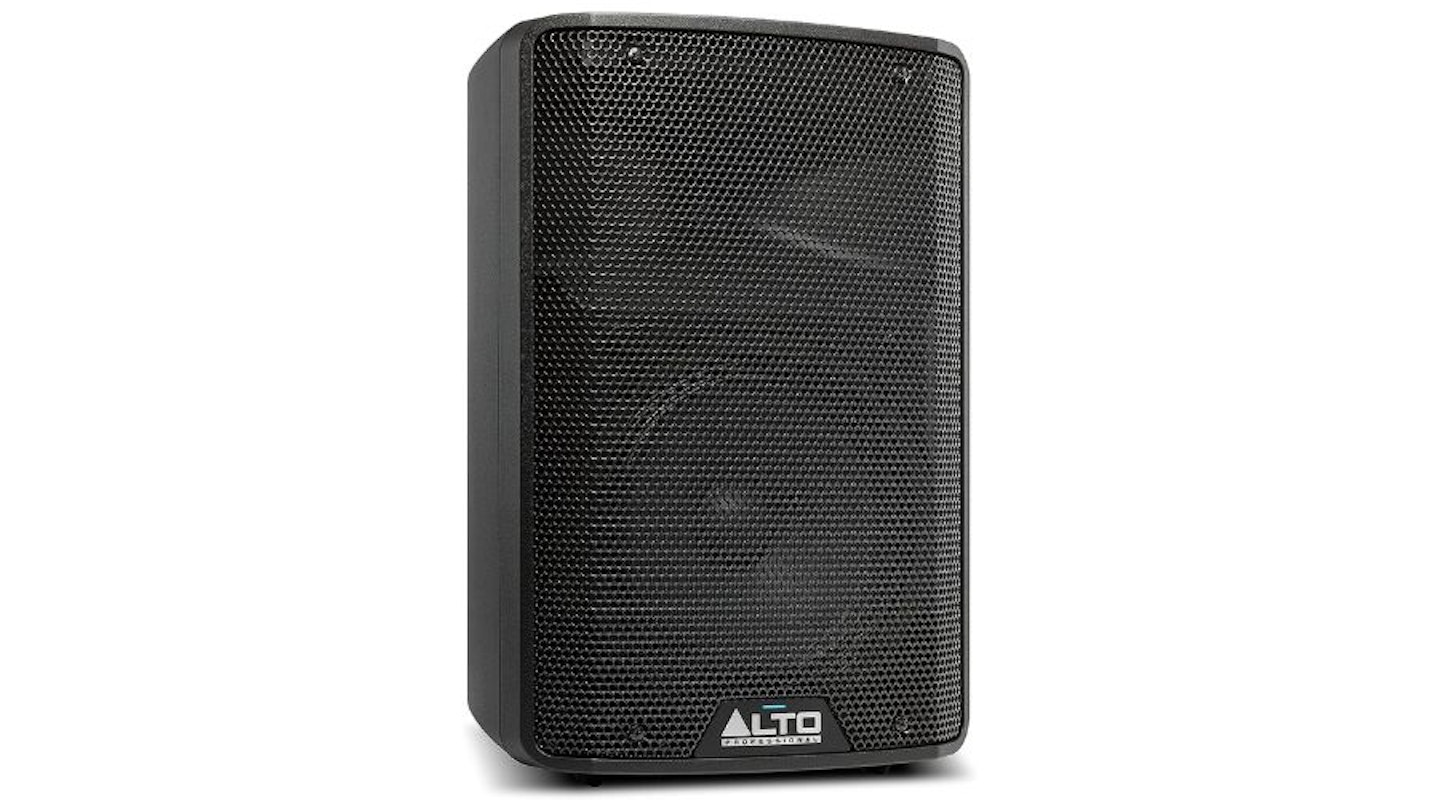 Amazon/Alto
Amazon/AltoThis Alto TX308 speaker is a fantastic piece of kit that's highly versatile. Of course, you can use it as a standard home speaker and enjoy its powerful sound from the comfort of your sofa, but where it really shines is on the go.
It's designed as a PA speaker, meaning you can lay it down like a wedge monitor or even pole mount it. If you want to use it for a gig, it's highly portable and surprisingly lightweight.
Another factor we love about this speaker is its durability. You can rely on this pick to last you a good while thanks to its thermal and overload protection, as well as the sturdy materials used in its build. It might be a bit small for some people's liking, but even so, the sound projected doesn't disappoint.
Pros
- Compact and notably lightweight
- Impressively durable and heavy-duty
- Versatile uses
Cons
- May be too small for some
| Drivers: | 8-inch low-frequency driver, long-excursion woofer, 1.4-inch voice coil, 1-inch titanium diaphragm tweeter |
| Output power: | Up to 350W |
| Impedance: | Unspecified |
| Frequency range: | 75Hz - 20kHz |
| Active/Passive: | Active |
| Dimensions: | 42.2 x 27.2 x 25.1 cm |
| Weight: | 5.6kg |
Best Bluetooth
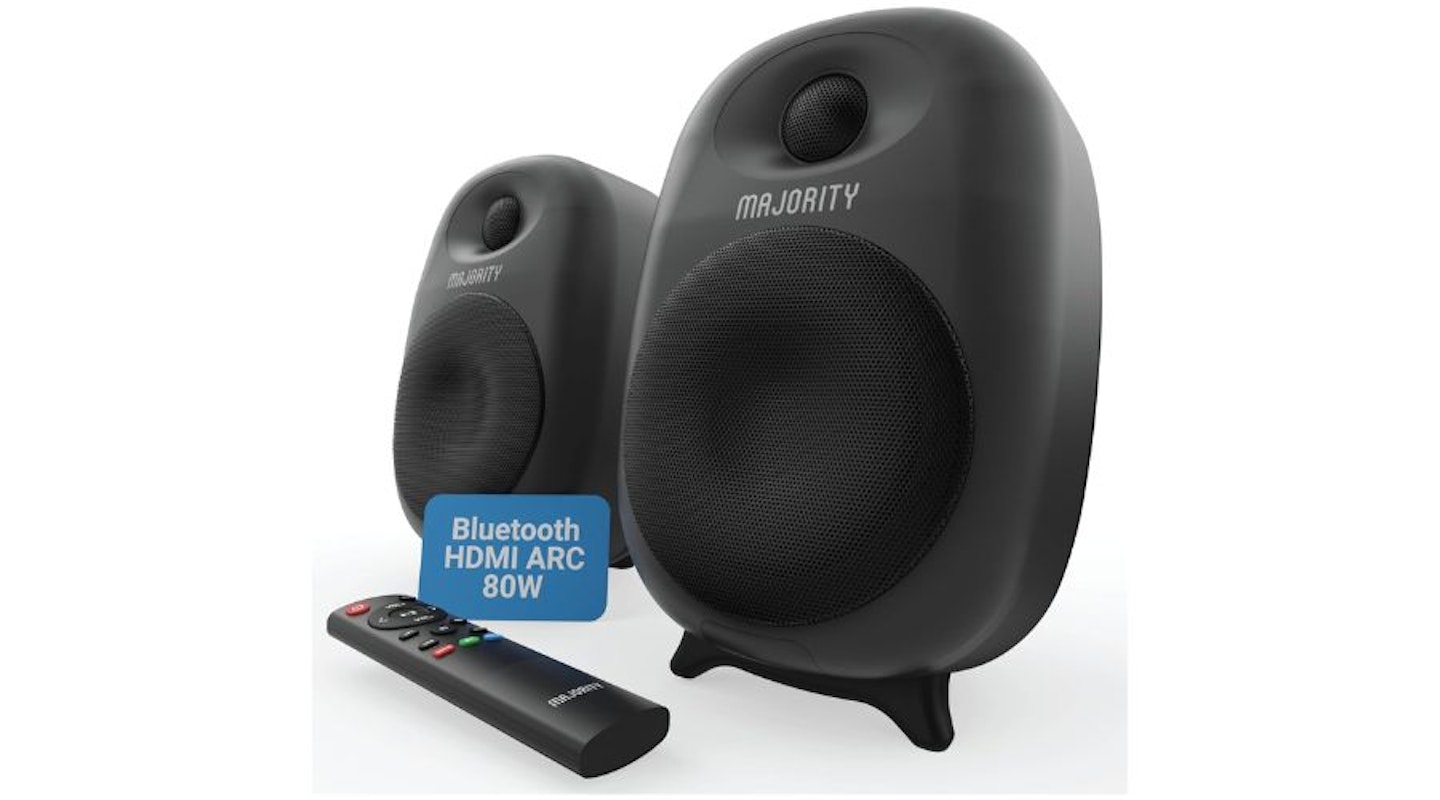 Amazon/MAJORITY
Amazon/MAJORITYSetup and connections can be a nightmare, which is why we appreciate the simplicity and convenience of these Bluetooth speakers. Sure, they may not be quite as powerful as other options, but the compatibility more than makes up for that. Plus, thanks to the handy remote, it's easy to adjust the EQ to your liking.
Bluetooth speakers of this size are a natural pick for party-goers or anyone looking for a set of compact PC speakers, but since these have an HDMI Arc connection, it's actually very simple to connect them to your TV. If you want a quick way to improve your TV's soundscape, definitely consider these.
If we were to have one complaint, it's that these speakers don't have many extra features. What you see is what you get; very effective yet also very simple.
Pros
- Brilliant value
- Easy to set up and pair with other devices
- EQ is easy to adjust
- Plenty of connections
Cons
- Less extra features than other options
| Drivers: | 5-inch drivers, 1-inch silk dome tweeter |
| Output power: | 80W |
| Impedance: | Unspecified |
| Frequency range: | Unspecified |
| Active/Passive: | Active |
| Dimensions: | 23 x 15.5 x 15.5 cm |
| Weight: | 2.4kg |
Jargon buster
As these speakers have amplifiers built-in, factors like impedance and wattage are much less of an issue; as you won't be hooking these up to a separate amplifier. But, active speakers of all sizes still come with an amount of jargon. Here's a run-down of the most common terms you'll find.
Active speakers
Unlike passive speakers that have no active power or amplifier circuitry, active speakers do. This means that you can hook up any sound source directly to the speakers, usually via an auxiliary input connection; such as an audio jack, optical input, or twin phono plugs in the case of speakers for a record player.
HDMI ARC
ARC stands for 'Audio Return Channel'. This kind of HDMI connection will send sound from your television to your active speaker. Sound from other devices attached to your TV, like Bluray players, will get passed to the speaker too.
Watt
Wattage in regard to sound output and speaker power is a measure of the strength of the audio signal that drives the speaker. The wattage between the speaker and traditional separate amp needs to be compatible to avoid potentially damaging both; but of course with active speakers this is all dealt with for you.
Decibels
Sound is measured in decibels (dBs). While it's an accepted measure of volume, it doesn't correlate with wattage. More wattage doesn't necessarily mean bigger or better volume, or quality for that matter. Usually, manufacturers specify the amount of dBs that a speaker can produce with a single Watt of power at a 1-metre distance.
Drivers
A driver is a device inside any speaker, be it wired headphones or an external speaker, that converts electrical signals into sound. So it follows, larger drivers tend to be able to deliver a more powerful sound with greater accuracy. That said, this isn't always the case as build material quality also plays an important role.
Tweeters
A speaker has two components: a woofer and a tweeter. A tweeter is responsible for producing high-frequency sounds. They're often a dome shape and may even be independently positionable.
Woofers
A woofer is the part of the speaker that produces low-frequency sounds. You'll commonly see these described by the width of the cone - in inches or centimetres. This will also give you a slight indication of how much range and power they may have.
Frequency Range
This is a measurement, in Hertz (Hz) of the range of sound frequencies a speaker can reproduce. Our ears can perceive 20 - 20,000 Hz, with the lower number being a lower tone and vice versa.
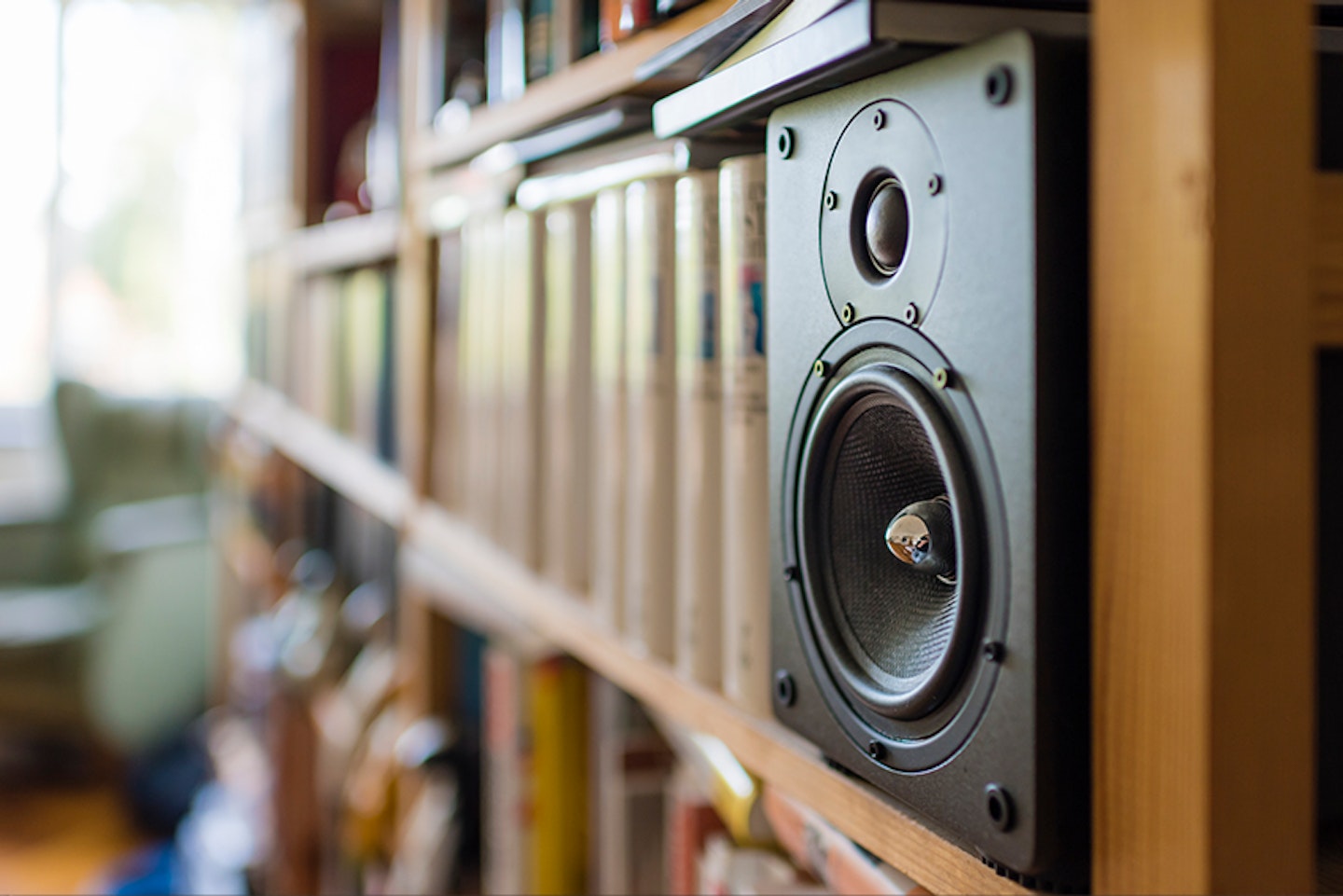
How to choose the best active speakers for you:
What kind of listener are you?
With active speakers, they all tend to live in the same ballpark when it comes to overall size. More often than not they'll be no larger than a standard bookshelf speaker. That's because self-amplified speakers tend to need to be a bit more portable and designed to slot into small nooks and crannies, or next to other equipment. The odds are, if you're going for one of these, you're not the sort of listener who wants or needs a separate amplifier and passive speakers. Both of those are expensive and bulky compared to active speaker solutions.
So, your decision here is really a trade-off between keeping things portable and practical (such as speakers for a PC), and having a more high fidelity for music when adding speakers to a record deck or even fixed on the wall as part of a multiroom audio setup. It'll also somewhat depend on what equipment you're looking to connect them to. Read on to get more pointers before you buy...
Connect your equipment
Active speakers don't tend to come equipped with the array of input options you'd normally find on a dedicated amplifier. Then again, that's the point. If you're opting for an active speaker in the first place, chances are you're looking to limit cable mess; and you probably want to enjoy your music from a small handful of sources.
A system with Bluetooth will be best for easy connections with your other devices. And on the outside chance that you're looking to route your TV audio through it, you might want to choose one with an HDMI ARC port. But back to the music: don't forget your CD player. That may require an optical input in your active speaker. Your old MP3 player might need a 3.5mm audio jack input. And last but not least, having a phono input or two will mean your record player or other analogue gear can be used. Add up your connection types before you buy.
Plan your speaker placement
The whole point of choosing active speakers over soundbars and the like is the true stereo separation effect that can be had. A pair of speakers means you can keep those left and right channels nicely separated in your room. Due to their compact ethos, most active speakers are very flexible in terms of placement, even in the smallest of rooms. However, you'll still want to plan for enough separation between each speaker so that you benefit from stereo sound. The best bookshelf speakers may look great on the aforementioned bookshelf, but what's the point in having two if they're almost sitting next to each other?
Beware of the bling
Our expert choices here have avoided models that are all show and no go. Many cut-price speakers, and even some with higher price tags, are actually all about flashy looks. As with books, the cover may tell a very different story from the actual content. And that brings us to testing…
Try before you buy
Perhaps the best option with any active speaker is to buy from a store that supports easy returns if you're not satisfied. Reviews and tech specs aside, there is no substitute for listening to the best TV speakers in person. Or maybe you know a friend or colleague who has the speakers you're interested in, to arrange a road test. We recommend taking the music you love with you for testing speakers, as you'll get the very best idea of whether they suit both your ear and your taste in music.
FAQs
Who makes the best active speakers?
We're huge fans of Edifier, as they seem to hit the perfect balance of quality, technical features and affordability. For us, they do consistently deliver more bang for the bucks they actually cost. All of our recommendations above are excellent choices, depending on your taste in looks, input options and size. But, as always, nothing can beat listening to any speaker before you go ahead and buy.
What's better – active or passive speakers?
This is really a question of taste. In technical terms, a good quality separate amplifier (when paired with large speakers) is probably going to outperform active speakers. But that quality and power gap is closing fast. And, as you'd expect, this is also down to your budget. It's completely possible to splash the cash on separates that sound a lot worse than middle-of-the-road active speakers. Plus, the benefit of active speakers is the lack of cable clutter and expense that comes with other options. As always, it's all about testing out the ones you like first.
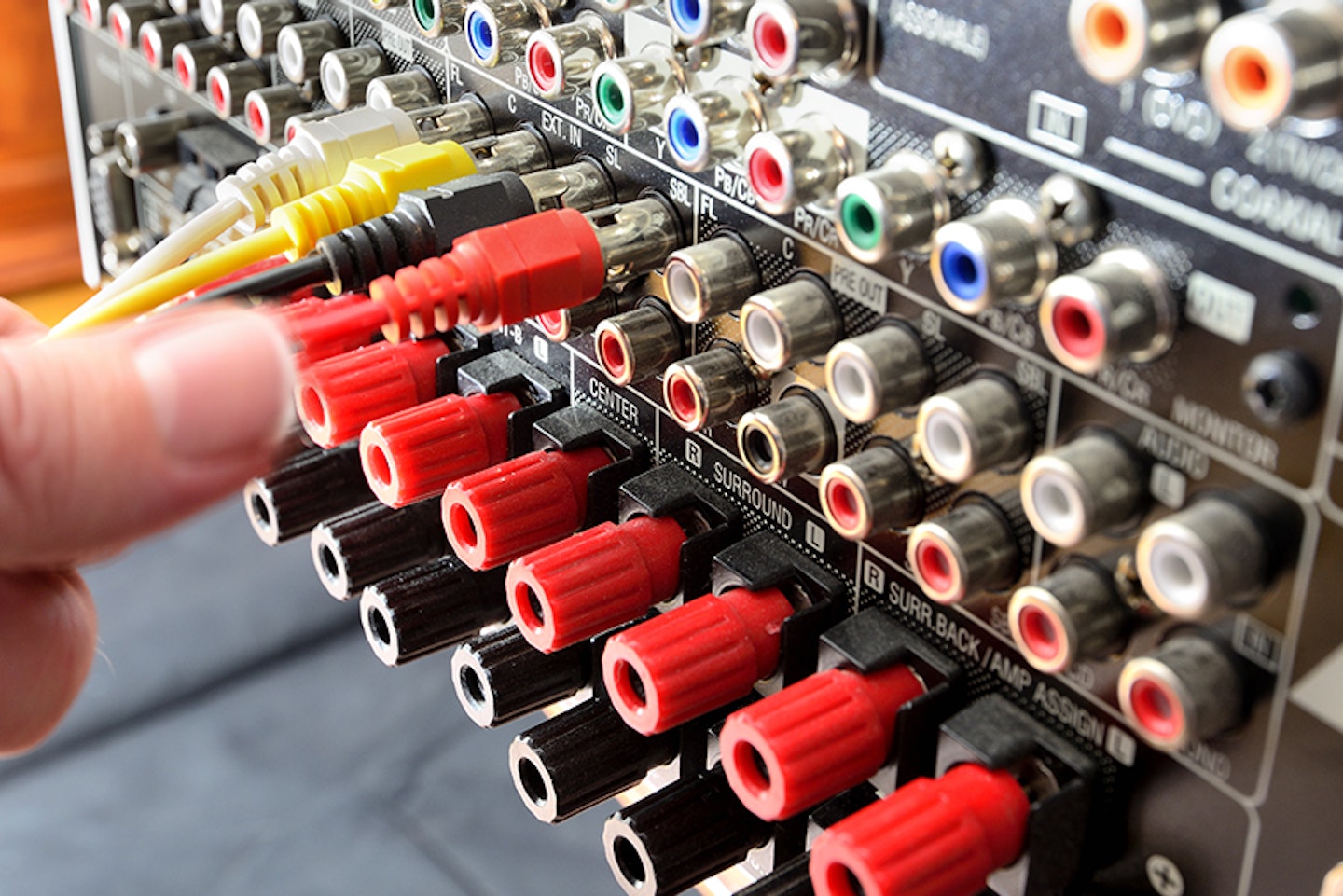
Can active speakers be used with an amplifier?
While technically possible, it's highly inadvisable to do this. Remember, the audio signal that a separate amplifier will output is normally designed to do two things: One, the wattage and impedance are carefully paired with that of the connected speakers; and two: the amount of power delivered is designed for speakers that are completely unpowered (passive). What that means is that you run the very real risk of overloading your active speakers resulting in permanent damage.
What are the best active speakers for turntables?
Subjective audio quality aside, this is going to come down to connection types and sound isolation. As most turntables output sound via a pair of phono cables (also known as RCA connectors), your active speakers should have at least one pair of phono inputs, for the left and right channels respectively. Be aware though that, unless your turntable has a pre-amp built into it, its phono output will need a separate pre-amp unit to boost the signal enough to be amplified. Pre-amps are small and relatively inexpensive, such as the Fosi Audio Box X1 Phono Preamp.
As far as sound isolation goes, the main thing to remember when playing vinyl records at higher volumes is the distance and placement of the active speakers. If you have your speakers on either side of a turntable, any vibration from the speakers may travel through the shelf or unit to the stylus or platter. Vibration-dampening turntable feet vary in quality, so don't wholly depend on these. Ideally, your speaker choice will have (or have the option to add) feet that will help to isolate the vibrations between the speaker and the surface it stands on. The ultimate answer to this issue is to place them on a different surface to the turntable or mount them to the walls.
What are the best active speakers for classical music?
Classical music may demand more clarity and separation from speakers than many other musical genres. Other than trialling the capabilities of your chosen speaker (again, preferably by taking your favourite classical tracks with you to test play) you will only be able to take your pick of the best active speakers based on reviews and technical specification sheets. In general, the more drivers a speaker has, the more easily you will hear separation in frequencies – helping you to pick out orchestral details at all levels.
Chris Duffill is a Senior Tech Writer and Reviewer for What's The Best and Yours. His background includes writing, editorial, marketing, design, video production and photography.
He specialises in home entertainment and audiovisual tech, including speakers, amplifiers, turntables, streaming media players, and TVs. He is also one of our resident experts in computing (PCs, tablets, smartphones, smartwatches), DSLR photography and all kinds of digital cameras. He also writes about retro gaming, game consoles and various electronic gadgets. If it plugs in, lights up or makes a noise, he'll write about it.
Subscribe to the What's The Best Newsletter to keep up to date with more of the latest reviews and recommendations from the rest of the What's The Best team.
